2017-2018
 Will Fuelberth – University of Iowa
Will Fuelberth – University of Iowa
HaloSat: The Missing Baryon Problem
The visible universe is made up of atoms that can produce and absorb light. This is called “normal” matter. When astronomers compare the amount of normal matter that was present when the universe was young, they find a problem: about half of the matter has gone missing. Read more.
Allison Golbach – Drake University
Epigenetic Effects of DNA Damaging Agents
High energy radiation due to environmental catastrophes, radiation treatment, or chemotherapy leads to DNA damage, including both single and double strand breaks. Read more.
 Reagan Hoefler – Iowa State University
Reagan Hoefler – Iowa State University
Growing Maize on Mars: The Effects of Radiation induced Transposable Element Activity on the Growth of Successive Corn Generations
In this research project, now spanning two years, I aim to determine if radiation levels typical of those on Mars can activate usually quiescent transposable elements (TEs) in the maize genome, of which they compose 80%. Read more.
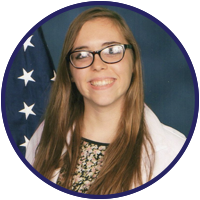 Amanda Hoerres – Drake University
Amanda Hoerres – Drake University
Role of Proteases in DNA Repair
DNA repair mechanisms are an integral part of maintaining homeostasis within all organisms. When these mechanisms are altered there can be dire consequences, such as cancer. Read more.
Robin Howk – University of Iowa
Chorus Wave Detection in the Van Allen Radiation Belts
The work being done on the EMFISIS project focuses on the formation of chorus waves which are thought to have an important role in the creation of killer electrons, highly charged particles that can be harmful to spacecraft and astronauts. Read more.
 Nina Jocic – University of Northern Iowa
Nina Jocic – University of Northern Iowa
Diruthenium Complexes as Potential Catalysts of CO2 Hydrogenation
The amount of CO2 in the environment can be controlled by the reduction of CO2 with H2 to form products such as formic acid, methanol, and methane. Read more.
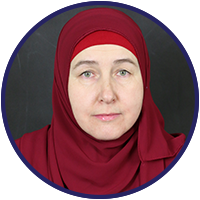 Mirela Kapo – University of Iowa
Mirela Kapo – University of Iowa
Ion Tracking in Martian Atmosphere
From previous missions to Mars we learned that long time ago Mars had a denser atmosphere and liquid water on its surface. Read more.
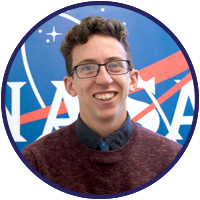 Travis King – Iowa State University
Travis King – Iowa State University
Development of low cost cubesat structure for CySat-1
In February 2017, the CySat team at Iowa State University was selected in NASA’s CubeSat Launch Initiative (CSLI). Read more.
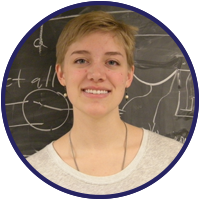 Clare Laubenthal – University of Northern Iowa
Clare Laubenthal – University of Northern Iowa
New Insights into the “Manna from Heaven” Hypothesis
Our laboratory’s ongoing mission is to create and study aerosols, which form as a result of the radiation of organic gases by ultraviolet light. Read more.
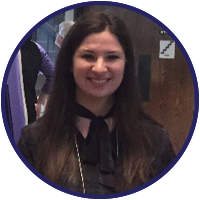 Dani Lipman – University of Iowa
Dani Lipman – University of Iowa
Characterizing the structure of the Martian bow shock
This project focuses on characterizing the structure of the Martian bow shock using data from the Mars Atmosphere and Volatile EvolutioN mission (MAVEN). Read more.
 Miles Lucas – Iowa State University
Miles Lucas – Iowa State University
Analyzing Planetary Systems using Infrared Spectroscopy
I am involved in helping Dr. Massimo Marengo at Iowa State University in his focus on planetary system dynamics. He is using IRTF/SpeX data from NASA’s Near InfraRed Disk Survey (NIRDS). Read more.
 Carter McCall – Drake University
Carter McCall – Drake University
Kolmogorov Complexity and Error-Correcting Codes
Despite the many advances in the theory of error-correcting codes, many questions still remain about the existence of codes that balance both efficiency and reliability. Read more.
 Christopher Michael – University of Iowa
Christopher Michael – University of Iowa
Low-Cost Spectroscopy for Small Optical Telescopes
Many universities operate small (less than 1m) optical telescopes for student observing and research. Read more.
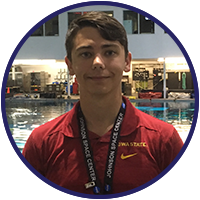 Dillyn Mumme – Iowa State University
Dillyn Mumme – Iowa State University
Eagle Eye
Eagle Eye is a hybrid airship proof of concept vehicle for Mars. It would be used to assist in planetary exploration of Mars where traditional rovers or humans cannot go. Read more.
 Michael Ohman – Drake University
Michael Ohman – Drake University
Regulation of Methyltransferases in DNA repair
Damage to DNA occurs very often. So often, that there are very intricate mechanisms for repairing a wide array of DNA damage. A common insult is alkane groups being added to cytosine and guanine. Read more.
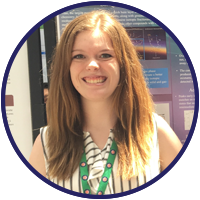 Madeline Roach – University of Northern Iowa
Madeline Roach – University of Northern Iowa
Incorporation of Magnetic Ions in TaS2 Nanowires
Previous studies by our group seem to have determined the correct reaction conditions to repeatably grow TaS2 nanowires. The research I am conducting incorporates magnetic ions such as iron, manganese, and chromium into these nanowires. Read more.
 Zach Robole – Iowa State University
Zach Robole – Iowa State University
Controlling the Oxidation of Catechol to O-quinone to Create Better Antioxidant Additives
Catechol is a molecule that can readily oxidize to o-quinone through the transfer of electrons, thus making it a viable antioxidant. In fact, it has been shown that catechol can work as an antioxidant additive in biofuels to make them more efficient. Read more.
 Joseph Senchuk
Joseph Senchuk
JUICE: Radar for Icy Moon Exploration: Ground Support Equipment
JUICE is an upcoming European Space Agency mission to Jupiter that when injected into orbit, will use scientific instruments to make observations about three Jovian icy moons: Ganymede, Europa, and Callisto. Read more.
 Emma Shipley – University of Northern Iowa
Emma Shipley – University of Northern Iowa
Prebiotic Potential of Aerosols
We are examining the “manna from heaven” hypothesis that early life ate compounds that came from the sky. Read more.
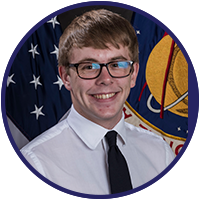 Josh Wallin – Iowa State University
Josh Wallin – Iowa State University
OpenUAS
With a lack of open source options for hobbyists, students, and researchers, the goal of the OpenUAS team is to develop an affordable, commercial-off-the-shelf (COTS) aircraft, including software and electronics. Read more.
